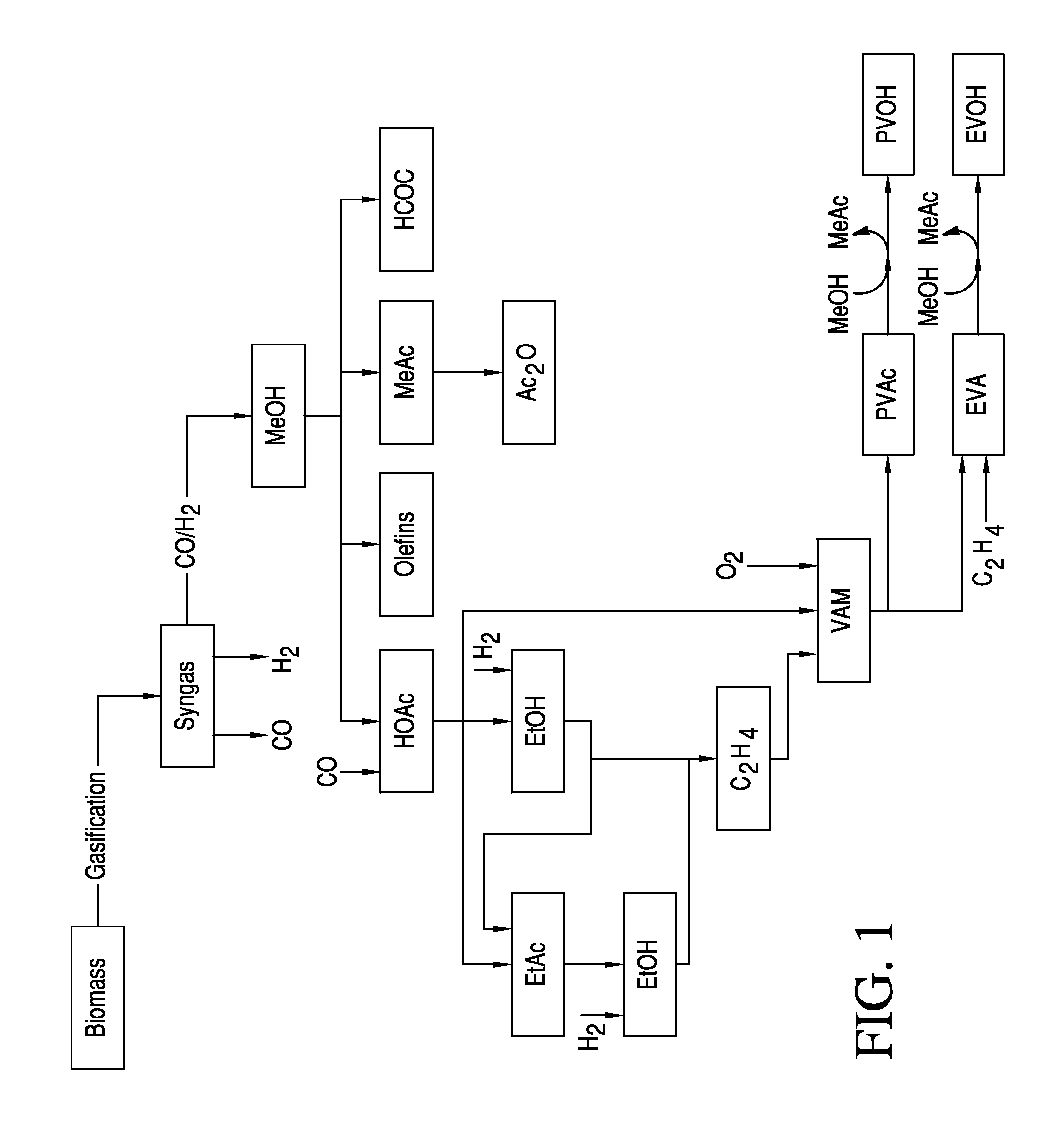Biomass gasification and integrated processes for making industrial chemicals through an ester intermediate
a technology of ester intermediate and biomass gasification, which is applied in the direction of combustible gas production, metal/metal-oxide/metal-hydroxide catalyst, chemical production, etc., can solve the problems of reducing the production of ethanol, requiring removal and costly disposal, and industrial chemicals may require significant capital expenditures to operate a cost-efficient biomass gasification. , to achieve the effect of reducing methyl acetate with hydrogen, reducing acetic acid with hydrogen
- Summary
- Abstract
- Description
- Claims
- Application Information
AI Technical Summary
Benefits of technology
Problems solved by technology
Method used
Image
Examples
Embodiment Construction
Introduction
[0039]The present invention relates generally to processes for producing industrial chemicals, in particular ethanol and derivatives thereof, from biomass. The processes involve specialized gasification techniques for converting biomass to syngas, wherein the syngas is particularly well suited for synthesizing the desired industrial chemical, e.g., alcohol, carboxylic acid, ester, aldehyde, olefin or polymer. The biomass gasification technology preferably operates at a high pressure relative to other biomass gasification technologies, e.g., up to 20 bar. Such gasification processes are generally preferred in that they form pressurized syngas streams having the desired hydrogen and carbon dioxide content at or near the desired pressure for subsequent conversion to the desired product, e.g., methanol, acetic acid or ethanol.
[0040]In some embodiments, the invention relates to integrated processes for forming ethanol from biomass via methanol and acetic acid intermediates an...
PUM
| Property | Measurement | Unit |
|---|---|---|
| Fraction | aaaaa | aaaaa |
| Fraction | aaaaa | aaaaa |
| Pressure | aaaaa | aaaaa |
Abstract
Description
Claims
Application Information
 Login to View More
Login to View More - R&D
- Intellectual Property
- Life Sciences
- Materials
- Tech Scout
- Unparalleled Data Quality
- Higher Quality Content
- 60% Fewer Hallucinations
Browse by: Latest US Patents, China's latest patents, Technical Efficacy Thesaurus, Application Domain, Technology Topic, Popular Technical Reports.
© 2025 PatSnap. All rights reserved.Legal|Privacy policy|Modern Slavery Act Transparency Statement|Sitemap|About US| Contact US: help@patsnap.com



